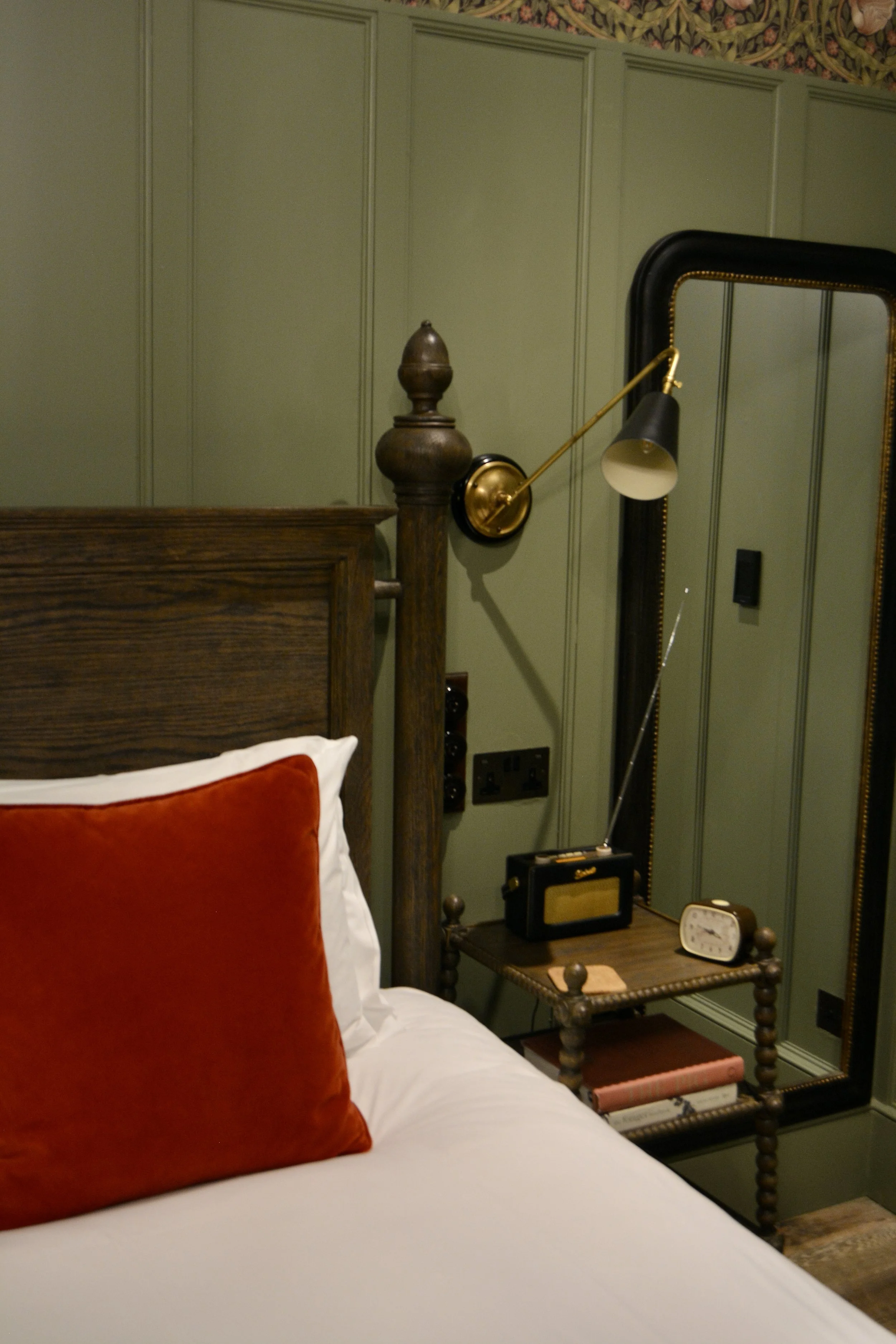A Pig-turesque Getaway

Following not one, but two covid cancellations, we finally made it to The Pig! With cases on the up again, it was touch and go whether we would get there - and I am so glad that we did. It was the R&R we so badly needed before heading into the Christmas period.
After forty years in the industry, launching Hotel du Vin with Gerard Basset and supporting the opening of Babington House with Nick Jones, Robin Hutson teamed up with hotel marketing expert David Elton and financier Jim Ratcliffe to open the first Pig hotel in July 2011. Rather than being stiff, pretentious and intimidating, the team set out to make country house hotels more accessible. Every detail, down to the name, does just that - ‘The Pig’ conjures up images of a good old British pub. And the founders take a very personal approach, ensuring the hotels feel more like homes than part of a business.
Interiors
When opening a new site, the team start by picking the building. It must meet strict criteria - it has to be beautiful, interesting, have a sense of place, the potential to be welcoming and warm. Some buildings are too grand, whilst others are too close to the road or lack the space required. Thus far, each property has been a historic building and the challenge then becomes turning it into something that works from an operational perspective.
Judy Hutson, the woman behind The Pig’s signature look, then imagines what character might live in that particular property as a way to develop an identity. For The Pig Near Bath, Judy devised Great Aunt Cynthia. “She was slightly more refined [than the Aunt of Brockenhurst] - think old-money, faded glory - with beautiful grey hair in a bun, a chiffon blouse with a cameo brooch, and a skirt that had seen better days.”
From here, she chooses fabrics, colours, furniture and artefacts. Rather than working up mood boards, she uses an entire table for her concepts - I like the sound of that, although I’m not sure my boyfriend would!
Fabrics
The fabrics are always very tactile - velvets, linens and wool - and patterns are based on the natural world. Judy starts with the curtain fabric first, as it is easier to find a paint colour to match this than work the other way around.
Colours
Colours are normally earthy and natural - greens, greys, blues and browns.
Furniture
When adding furniture, the team love to up-cycle, from apple crates used as coffee tables to milk churns turned into umbrella holders. They also add in new items for that mixture between old and new. Upholstered sofas, for example, can be given a vintage feel by using traditional fabrics.
Artefacts
When choosing artefacts, there seems to be a focus on things that ‘go together’, whether that is a shelf of plates that match or a collection of watercolour paintings with a unifying theme. These are sourced from antique markets and car boot sales.
Original Victorian and Edwardian taxidermy is also used in all of the Pigs to give an eccentric touch. They use animals that are a good fit for the area - seabirds near the beach, woodland creatures for more inland hotels.
Lighting is also well planned. For example, in a bedroom, there might be one circuit for task lighting, one circuit for a central feature like a chandelier and one for the floor and table lamps. This is functional, yet atmospheric when needed. What’s more, old light fittings are rewired, as it is hard to recreate the patina of age. These are topped with characterful lampshades.
The resultant style is easy, comfortable and relatable, just like someone’s home. Nothing is too perfect.
Landscape and gardens
Co-founder David is also in charge of the gardens at The Pig hotels. Because the buildings are classical, visitors expect the planting to follow, so the team work hard to create elements of surprise - plants in unusual places and salvaged pieces from experts Steve Hendersen and Travers Nettleton. Like the interiors, the gardens are informal.
But more than simply looking good, the gardens are important for produce and the team have become experts in growing their own and bringing ingredients to the table. Indeed, they have changed the traditional hierarchy of the kitchen - the kitchen gardener and forager are of equal rank to the head chef.
Dining rooms are designed to be in synergy with the gardens. They feel more like conservatories with tiled floors, unvarnished wood tables, terracotta, galvanised tin, potted herbs, garden artefacts and plants. Bringing the outside in!
I also love the huts you can find hidden about the gardens. For example, little garden sheds are used for treatments at The Pig near Bath, with interiors based on potting sheds. Shepherd huts at The Pig on the Beach are used for additional, unique rooms. They are something I would love to recreate one day.
We had a lovely night away and I’ll certainly be returning to The Pig in the new year! Information for this post has been taken from “The Pig: Tales and Recipes from the Kitchen Garden and Beyond”.



























